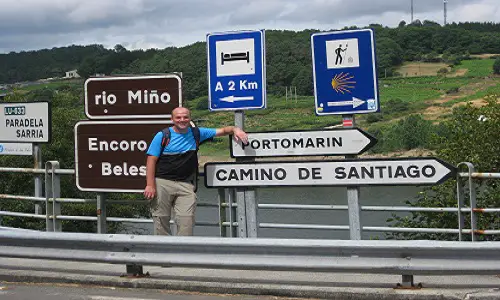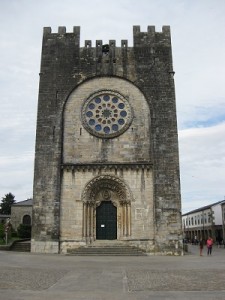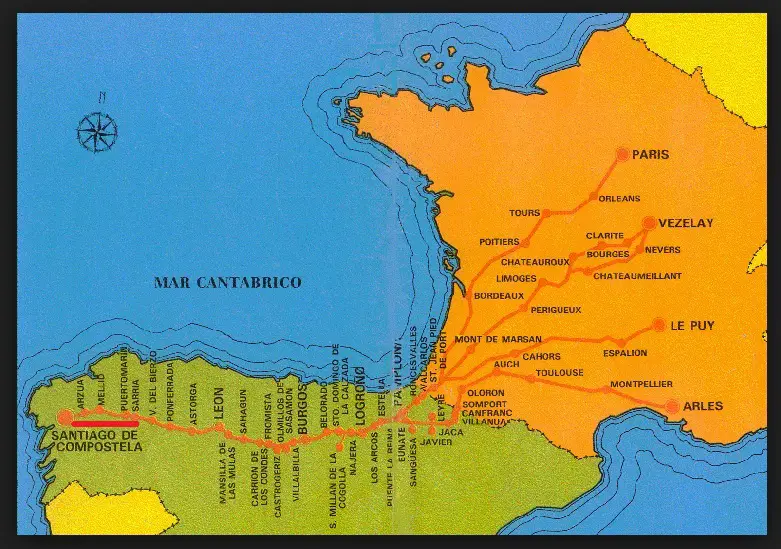A few weeks back I returned from the beautiful region of Galicia in Northern Spain where I undertook the Camino de Santiago (Way of St. James). It was a great time and I want to add some detailed posts on my hike there over the coming days.
It really is a lovely walk. I use the term walk purposely here as before I went a sister of a colleague of mine corrected me at a party when I used the term ‘hike’ to describe it i.e. it’s more a ‘walk’ than a cross country ‘hike’ as such.
Now, calling it a ‘walk’ is open to debate as while I only started from Sarria and walked one hundred and twenty or so kilometers to Santiago, the minimum amount to get your completion certificate or ‘Compostela’, many pellegrino’s (Pilgrims) will do the whole thing starting from St. Jean.
That’s a hike of approximately eight hundred kilometers or five hundred miles, part of which is through the Pyrenees so I would expect that to be pretty tough. While much of the Camino route is very well marked out on easily accessible paths and so maybe not really ‘hiking’ cross country as such, the sheer distance alone to me means it should be defined as a very long hike indeed.
Getting Started
We flew into Santiago de Compostela and then got a coach out to Sarria for the beginning of our journey. We flew in the day after the tragic train crash on 25th July so needless to say the atmosphere was somber from a city and country in mourning.
The trip was organized in such a way that our main bags were transported to our next place of accommodation so we only needed to bring a day pack with us when walking. We started on the Camino on Friday July 26th and walked twenty two kilometer’s from Sarria to Porto Marin.

The first thing that surprised me was the weather. I have been in Northern Spain before and so did know it can be quite mild, similar to the United Kingdom and Ireland. However for mid-July, I did expect it to be a bit hot. This wasn’t really the case. The mornings are fresh and cool and really ideal for walking in. The paths were very dusty on the first day as it hadn’t rained in a few days so my hiking boots (I opted for boots for the trip rather than my hiking shoes but they would have been fine) and socks were like two big lumps of dust on my feet!
 This leg was nice enough with some detours through country roads and natural pathways. Most of the ‘stage’, as such, was along tree lined roads which offered good shelter from the sun as the day progressed. The weather held and the sun shone for the whole of this part of the journey.
This leg was nice enough with some detours through country roads and natural pathways. Most of the ‘stage’, as such, was along tree lined roads which offered good shelter from the sun as the day progressed. The weather held and the sun shone for the whole of this part of the journey.
As we walked we passed through many little hamlets and passed many small cafes where you could get your Camino passport stamped to acquire your certificate at the end. It’s a minimum of two stamps from two different places each day to ensure you get your Compostela.
This is easily done as everywhere, from the cafes to the restaurants, hostels to hotels will all be able to provide you with a stamp. As with any hike you need to ensure you have the right hiking supplies with you, so adequate water, etc. is important as there can be significant gaps between hamlets and therefore cafés.
Conclusion
So, we had day one under our belts and by making it to Porto Marin we had twenty two kilometers in the bag. The group I was with were generally in good shape but talk of a few blisters was bubbling among a few folks.
I need to sign off on this for today so will continue on from day two it in the next blog post! If you want to read the next installment, click here 🙂
Have you hiked the Camino? Share your experiences below, I’d love to hear about it.
